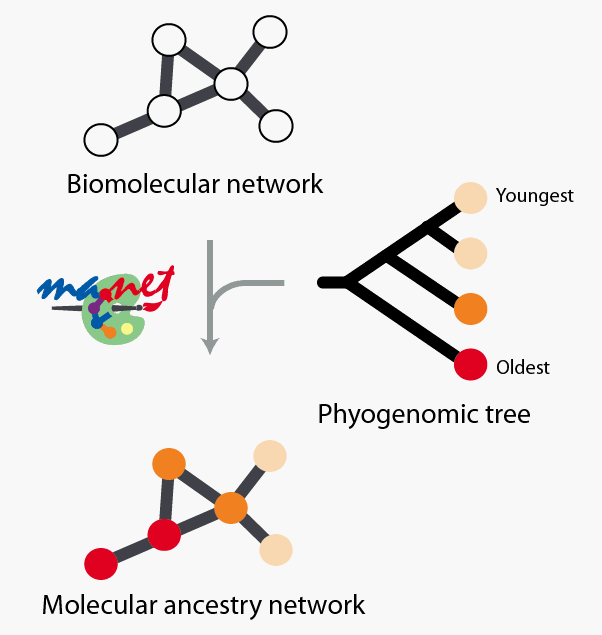
MANET database
Encyclopedia

Bioinformatics
Bioinformatics is the application of computer science and information technology to the field of biology and medicine. Bioinformatics deals with algorithms, databases and information systems, web technologies, artificial intelligence and soft computing, information and computation theory, software...
database
Database
A database is an organized collection of data for one or more purposes, usually in digital form. The data are typically organized to model relevant aspects of reality , in a way that supports processes requiring this information...
that maps evolutionary relationships of protein architectures directly onto biological networks.http://www.manet.uiuc.edu It was originally developed by Hee Shin Kim, Jay E. Mittenthal and Gustavo Caetano-Anolles
Gustavo Caetano-Anolles
Gustavo Caetano-Anollés is Professor of Bioinformatics in the Department of Crop Sciences, University of Illinois at Urbana-Champaign. He is an expert in the field of evolutionary genomics. He obtained his doctorate in biochemistry at the National University of La Plata in Argentina in 1986...
in the Department of Crop Sciences of the University of Illinois at Urbana-Champaign
University of Illinois at Urbana-Champaign
The University of Illinois at Urbana–Champaign is a large public research-intensive university in the state of Illinois, United States. It is the flagship campus of the University of Illinois system...
.
MANET traces for example the ancestry of individual metabolic enzymes in metabolism
Metabolism
Metabolism is the set of chemical reactions that happen in the cells of living organisms to sustain life. These processes allow organisms to grow and reproduce, maintain their structures, and respond to their environments. Metabolism is usually divided into two categories...
with bioinformatic, phylogenetic, and statistical methods. MANET currently links information in the Structural Classification of Proteins (SCOP
SCOP
SCOP may refer to:* Structural Classification of Proteins* Suprachiasmatic nucleus circadian oscillatory protein, a member of the leucine-rich repeat protein family* Société coopérative, a type of corporation in France...
) database, the metabolic pathways database of the Kyoto Encyclopedia of Genes and Genomes (KEGG), and phylogenetic reconstructions describing the evolution of protein fold architecture at a universal level. MANET literally "paints" the ancestries of enzymes derived from rooted phylogenetic trees directly onto over one hundred metabolic pathways representations, paying homage to one of the fathers of impressionism
Impressionism
Impressionism was a 19th-century art movement that originated with a group of Paris-based artists whose independent exhibitions brought them to prominence during the 1870s and 1880s...
. It also provides numerous functionalities that enable searching specific protein folds with defined ancestry values, displaying the distribution of enzymes that are painted, and exploring quantitative details describing individual protein folds. This permits the study of global and local metabolic network architectures, and the extraction of evolutionary patterns at global and local levels.
A statistical analysis of the data in MANET showed for example a patchy distribution of ancestry values assigned to protein folds in each subnetwork, indicating that evolution of metabolism occurred globally by widespread recruitment of enzymes. MANET was used recently to sort out enzymatic recruitment processes in metabolic networks and propose that modern metabolism originated in the purine
Purine
A purine is a heterocyclic aromatic organic compound, consisting of a pyrimidine ring fused to an imidazole ring. Purines, including substituted purines and their tautomers, are the most widely distributed kind of nitrogen-containing heterocycle in nature....
nucleotide metabolic subnetwork. The database is useful for the study of metabolic evolution
Metabolism
Metabolism is the set of chemical reactions that happen in the cells of living organisms to sustain life. These processes allow organisms to grow and reproduce, maintain their structures, and respond to their environments. Metabolism is usually divided into two categories...
.

